The Early Years
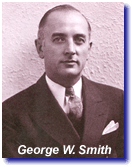 In January, 1933, with George W. Smith as managing director
of Wheeling, West Virginia station WWVA, the idea was conceived to
program something special for late night Saturday listeners. A program
of country style music, called a "Jamboree," was put together, using
local talent. At 11:00 p.m. on January 7, country music history was made
when the WWVA Jamboree went on the air for the first time.
In January, 1933, with George W. Smith as managing director
of Wheeling, West Virginia station WWVA, the idea was conceived to
program something special for late night Saturday listeners. A program
of country style music, called a "Jamboree," was put together, using
local talent. At 11:00 p.m. on January 7, country music history was made
when the WWVA Jamboree went on the air for the first time.
Listener
response was overwhelming, and for three months regular Saturday night
Jamboree broadcasts were aired.
In response to public demand to
see their musical favorites in person, show producers moved the show to
the Capitol Theatre, where it opened that first day of April, 1933, to
an eager audience of 3,266 people, with still another thousand turned
away from the full house.
Because the
Capitol Theatre was used for Saturday night movies, Station officials
booked the theatre for Jamboree shows to begin at midnight...after the
movies. The shows were billed "The Greatest Shows on the Air for a
Quarter" since that was the price of admission. A great tradition had
begun.
Who were these
fans that were turning the Wheeling Jamboree into a success? WWVA's Paul
Miller came up with the idea of a "Prowlin' Mike," later to be known as
the "Inquiring Mike." This gave a chance for Jamboree fans to send
greetings and personal messages back home. More importantly, it showed
management that fans were driving hundreds of miles to see the show they
had been listening to over the airwaves.
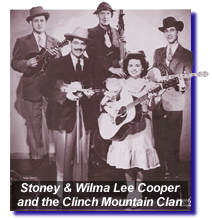 In 1934, the first Jamboree Harvest Home Festival was held
in the Capitol Theatre before a capacity crowd. During the mid-1930s,
the Air Castle Ballroom opened, offering Saturday night dancing to the
music of the WWVA Orchestra. It was from there that WWVA aired its first
remote broadcast.
In 1934, the first Jamboree Harvest Home Festival was held
in the Capitol Theatre before a capacity crowd. During the mid-1930s,
the Air Castle Ballroom opened, offering Saturday night dancing to the
music of the WWVA Orchestra. It was from there that WWVA aired its first
remote broadcast.
The Jamboree's early success was spreading more
than country music. Many other stations across the country thought they
could duplicate the tradition begun in Wheeling but none came close to
competing. The crowds continued flocking in ever-growing numbers.
Special transit cars and trains ran up and down the Ohio Valley bringing
country fans to Wheeling for a Saturday night of Jamboree entertainment.
1936 brought a
first to the Jamboree pages of history with the first outdoor Jamboree
ever held. This forerunner to the current Jamboree in the Hills , was
held in the Wheeling High School football stadium
(Wheeling Island Stadium)
and drew a crowd of over 5,000 fans.
Coming of Age
New names brought
new crowds into the Jamboree fold. By 1939 the world's Original Jamboree
had reached the half-million mark in attendance. Its popularity
increasing regularly, the Jamboree stars were soon on tour. In the early
40's, the tours became more popular and more names were added to the
cast of regular entertainers.
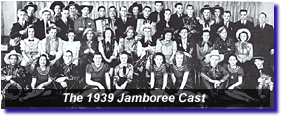
The first tour took
place in April 1939 as the Jamboree gang traveled to six towns in
Pennsylvania and Ohio giving performances to large crowds. Because of
the success, an annual Wheeling Jamboree Tour was planned but plans for
a new tradition were halted when World War II took center stage around
the world.
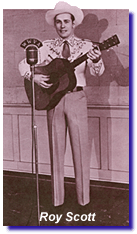 After the attack on Pearl Harbor in December 1941, the
"Inquiring Mike" feature had to be dropped in response to a National
Defense policy that advised against broadcasts that made a microphone
available to the public. During these years, a songfest called "Keep 'Em
Singing" took its place and earned special recognition from
Broadcasting, a trade magazine for the radio industry, for
building morale in a country ravaged by the depression and the war.
After the attack on Pearl Harbor in December 1941, the
"Inquiring Mike" feature had to be dropped in response to a National
Defense policy that advised against broadcasts that made a microphone
available to the public. During these years, a songfest called "Keep 'Em
Singing" took its place and earned special recognition from
Broadcasting, a trade magazine for the radio industry, for
building morale in a country ravaged by the depression and the war.
As many of its stars
left for duty in the Armed Forces, the girls of the Jamboree came into
their own and kept attendance up by singing to crowds that included men
in uniform, all of whom were admitted for free, regardless of their
branch of service. The war, however, would do something that only the
flood of 1936 had done until that time. The Jamboree show would be
discontinued for the duration of the war, in order to encourage
conservation of gasoline by the public. Until after the
war came on December 12, 1942.
The Jamboree show
continued during the remaining war years but only on the airwaves of
WWVA from the studios. There were no live theater broadcasts or public shows. Soldiers
stationed throughout the United States were finding the Jamboree
broadcasts to be a great spirit booster. As the war ended, the men of
WWVA and the stars of The Jamboree returned to Wheeling and on July 13,
1946, live theatre performances resumed. On February 28, 1947, another
milestone in Jamboree history was crossed when Miss Laverne Howell
became the one millionth visitor to The Wheeling Jamboree.
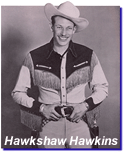 The Jamboree was becoming a
national institution. The first 20 years brought more than 1,750,000
fans to Wheeling for jamboree performances. Countless other millions
heard it on the radio. Listener surveys showed response from fans in 538
counties in 20 states and Canada. In its first 20 years, thousands of
pieces of mail were received every week from almost every state in the
nation.
The Jamboree was becoming a
national institution. The first 20 years brought more than 1,750,000
fans to Wheeling for jamboree performances. Countless other millions
heard it on the radio. Listener surveys showed response from fans in 538
counties in 20 states and Canada. In its first 20 years, thousands of
pieces of mail were received every week from almost every state in the
nation.
In the early 1950's,
it was popular for Jamboree entertainers to make personal appearances
outside of Wheeling. In 1952 alone, Jamboree acts made 761 personal
appearances in 436 cities and towns before a combined audience of
536,789 people.
For the 25th
anniversary in 1958, as had been the case five years earlier, the
Jamboree show was featured on the CBS show, "Saturday Night Country
Style." That nationwide salute was only part of the acclaim being given
the Jamboree locally and nationally.
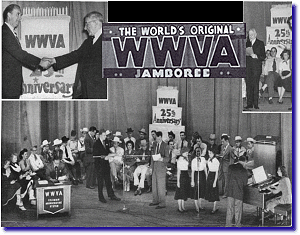
Basic
Communications bought the station in 1962, and when the Virginia Theatre
was scheduled for demolition, the Jamboree moved to the nearby Rex
Theatre through 1965. That same year the station switched to the ABC Network,
bringing listeners such well-known entertainers as Don McNeil, Dick Van
Dyke and Paul Harvey, who highlighted the occasion with a live broadcast
from WWVA radio.
Needing still more space to accommodate the
crowds, the Jamboree moved next to Wheeling Island Exhibition Hall in
1966 and then came full swing back to the Capitol in 1969. Basic
Communications bought the Capitol Theatre and moved the entire operation
into renovated offices and studios. Soon after, the Capitol Theatre was
renamed The Capitol Music Hall.
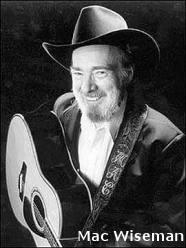 During
this era Mac Wiseman was brought to Wheeling as Program Producer
and Talent Director for the Jamboree. He stabilized the cast of
performers and solidified Bluegrass prominence on the Wheeling Jamboree.
While generally considered
a bluegrass singer, Mac Wiseman regularly and unapologetically crossed
the boundaries between bluegrass, country, and pop music. He worked as a
disc jockey, record company artist, repertoire director, and concert
promoter. Mac is also a co-founder of the Country Music
Association.
During
this era Mac Wiseman was brought to Wheeling as Program Producer
and Talent Director for the Jamboree. He stabilized the cast of
performers and solidified Bluegrass prominence on the Wheeling Jamboree.
While generally considered
a bluegrass singer, Mac Wiseman regularly and unapologetically crossed
the boundaries between bluegrass, country, and pop music. He worked as a
disc jockey, record company artist, repertoire director, and concert
promoter. Mac is also a co-founder of the Country Music
Association.
Breaking Country
Music Industry Records
Attendance
records for any Country Music show were also broken with the
appearance's of
Buck Owens and Merle Haggard at the Wheeling Jamboree during mid 60's.
Throughout the
late 60's, something was being felt in country music, but even Jamboree
artists couldn't quite tell what the feeling was. It wouldn't go away
however, and growing stronger, finally burst forth with greater
enthusiasm and quality in the 1970's. After all these years, country
music had finally "arrived." It arrived largely because of the influence
of the Jamboree.
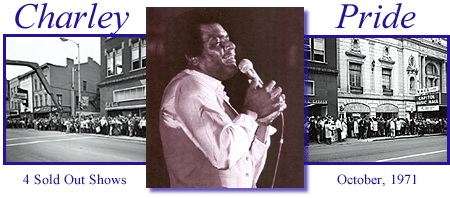
October 23, 1971
stands alone in the annals of the Jamboree. On that date, an attendance
record was set that has yet to be equaled. In his first Wheeling
appearance, Charley Pride had an unprecedented four show sell-out by
more than ten thousand country music fans. Having just been named male
Vocalist of the Year and Entertainer of the Year at the annual Country
Music Association Awards, Pride brought the capacity crowd to its feet
during his four 30-minute performances.
Each Jamboree
performance was as fresh as a new dawn, but stable as yesterday. The
secret to its success lay in Jamboree's honest approach to giving
country music fans what they wanted...good country music.
On October 15, 1983,
The Wheeling Jamboree dedicated its "Walkway of Stars", intended to be a
lasting tribute to individuals who have made a significant contribution
to The Wheeling Jamboree and the ideals of country music. As part of its
50th Anniversary Celebration, 50 engraved bronze stars were embedded in
the sidewalk leading into the Capitol Music Hall. The fifty honorees
were:
|
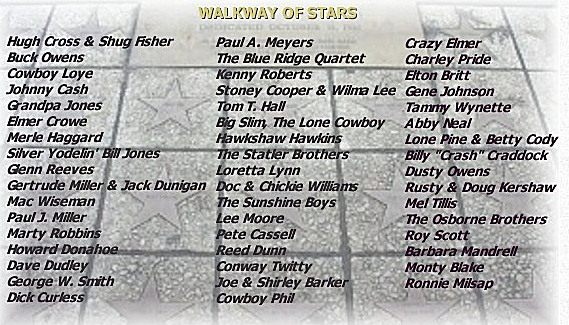 |
-
Hugh Cross and Shug Fisher
-
Buck Owens
-
Cowboy Loye
-
Johnny Cash
-
Grandpa Jones
-
Elmer Crowe
-
Merle Haggard
-
Silver Yodelin' Bill Jones
-
Glenn Reeves
-
Gertrude Miller and Jack Dunigan
-
Mac Wiseman
-
Paul J. Miller
-
Marty Robbins
-
Howard Donahoe
-
Dave Dudley
-
George W. Smith
-
Dick Curless
-
Paul A. Meyers
-
The Blue Ridge Quartet
-
Kenny Roberts
-
Stoney Cooper and Wilma Lee
-
Tom T. Hall
-
Big Slim, The Lone Cowboy
-
Hawkshaw Hawkins
-
The Statler Brothers |
-
Loretta Lynn
-
Doc and Chickie Williams
-
The Sunshine Boys
-
Lee Moore
-
Pete Cassell
-
Reed Dunn
-
Conway Twitty
-
Joe and Shirley Barker
-
Cowboy Phil
-
Crazy Elmer
-
Charley Pride
-
Elton Britt
-
Gene Johnson
-
Tammy Wynette
-
Abby Neal
-
Lone Pine & Betty Cody
-
Billy "Crash" Craddock
-
Dusty Owens
-
Rusty and Doug Kershaw
-
Mel Tillis
-
The Osborne Brothers
-
Roy Scott
-
Barbara Mandrell
-
Monty Blake
-
Ronnie Milsap |
The Wheeling
Jamboree doors still open every Saturday night to country music fans who
come to enjoy the music of the brightest stars in the country music
industry.
Since its 1933
premiere, The Wheeling Jamboree has been a byword for country music, a
genre which has been called "the only truly artistic musical
contribution to the world that Americans can solely claim as their own."
Gone now are the days of bales of hay adorning the stage, the blue-overalled
male performers and "gals" in cute gingham dresses. Gone, too, are some
of the memorable entertainers who performed here: Webb Pierce, Ernest
Tubb, Ira & Charlie Louvin, Tex Ritter, Crazy Elmer, Hawkshaw Hawkins,
Big Slim, Stoney Cooper and Doc & Chickie Williams. Doc & Chickie were
hailed as Wheeling Jamboree" and "West Virginia's Official Country Music
Ambassadors," Williams had performed special Jamboree shows every year
as well as many other concert dates across the country and Canada.
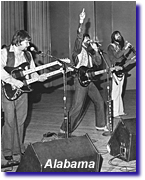 The Wheeling Jamboree -- the second oldest
country music program (next to Nashville's
The Wheeling Jamboree -- the second oldest
country music program (next to Nashville's
Grand Ole Opry) -- continues to lead
the way in the industry. All of the biggest contemporary names in
country music regularly appear on The Wheeling Jamboree and its
spin-off, Jamboree In The Hills: Randy Travis, Tanya Tucker, Reba
McEntire, Lee Greenwood, Alan Jackson, Kathy Mattea, Charlie Daniels,
Charley Pride, Tammy Wynette, Willie Nelson, Brad Paisley and the list
goes on. Modern though it may be these days, country music continues to
express sentiments of love or ambition of broken dreams or wanderings
that touch the heart of everyone - whether the subject be cotton fields
or lonesome highways, mountain homes or river boats, empty pockets or
empty hearts. The old-fashioned message is timeless; only the wrapping
is new.
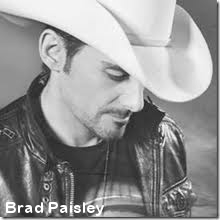
For the last 90 years, The Wheeling Jamboree has brought
this music from the heart of America to America's heart. The Wheeling
Jamboree endures as one of America's oldest live radio broadcasts and a
proud American tradition. The Wheeling Jamboree is a historic leader in
the tri-state area in tourism
dollars, with an estimated 10 to 35 million dollars poured into the
local economy (above and beyond ticket prices) in hotel/motels,
restaurants, service stations, general shopping, etc., annually.